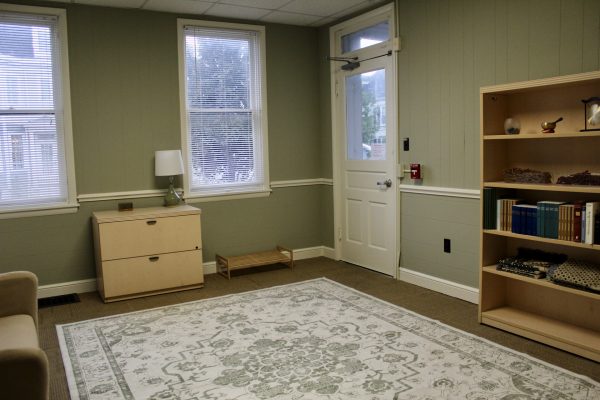Breaking Down the Strategic Plan
Dickinson’s 2023 strategic plan outlines five specific goals that the College seeks to accomplish: expand Dickinson’s market outreach, restore a vibrant campus community, develop a curriculum to address the future, better utilize alumni and update technological infrastructure to facilitate Dickinson’s needs.
The strategic plan is three pages and does not go into extensive detail. When asked about that, George Stroud, Dean of Student Life said, “the strategic plan was written intentionally in that way.” President John E. Jones III believes the strategic plan will help address critical challenges the college faces, and provides a framework from which the college will implement initiatives to solve the outlined challenges and goals. “We are challenged the same way all tuition-dependent liberal arts schools are,” Jones said.
The College plans to introduce a Center for Excellence in Teaching, Learning and Scholarship in order to enhance classroom instruction. Provost Neil Weissman said, “Dickinson has been very dynamic in advancing pedagogy and meeting the needs of our students.” The center’s resources will also serve to improve student equity, particularly for international students and underrepresented groups, according to Weissman.
“The quality of instruction at Dickinson is very high. The goal of the Center is not to fix something that is broken. Rather, it is intended to sustain the high quality of education at the college,” said Weissman. The center will be spearheaded by faculty at the Norman M. Eberly Multilingual Writing Center, Quantitative Reasoning Center and Academic Affairs Staff.
The strategic plan outlines numerous methods to increase the outreach of the liberal arts education at Dickinson. The college plans to improve and expand prospective student programming to increase the market reach of Dickinson. “It’s necessary for us to stay viable in the marketplace… It’s always a challenge to convince our market of the value of a liberal arts education,” said Jones. The college also plans to double down on the $75 million “Change a Life — Change the World” campaign to further increase financial aid resources for incoming students.
The College intends to utilize its alumni network more effectively. There has been a “period of time [prior to COVID] when we were not as good at cultivating alums as we should have been,” Jones said.
Jones hopes the The John M. Paz ’78 Alumni & Family Center will allow many alumni to frequently visit the campus more often. They should focus on “not just giving, but coming back to campus,” said Jones. Paraphrasing former college president William Durden ’71, Jones said, “[Alumni] need to say Dickinson several times a day.” He believes alumni speaking about Dickinson with friends, colleagues and family is an important aspect of alumni networking.
Dickinson hopes to continue to reinvigorate student life after the COVID-19 pandemic. The $50 million HUB renovation is a major part of these efforts, redesigning and improving the dining experience and providing what Jones has called a “campus living room” to facilitate a more cohesive campus life.
The plan also states the college will further invest in arts and athletic programs, as the college believes these programs are vital to a vibrant campus community.



